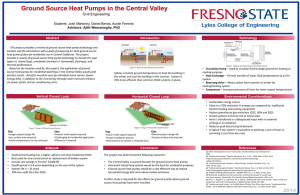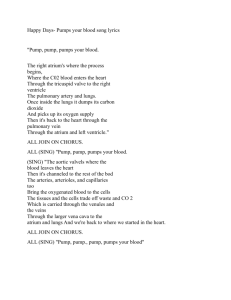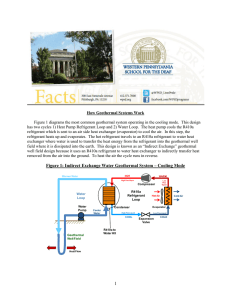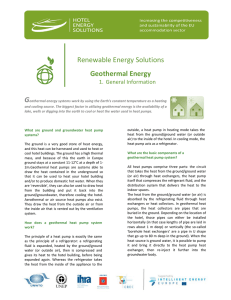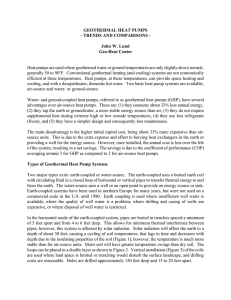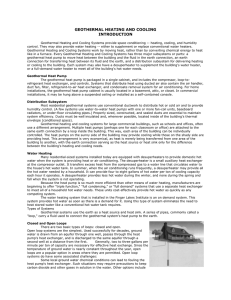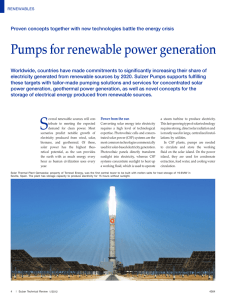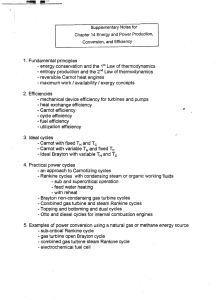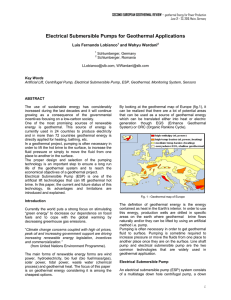Document 13443993
advertisement
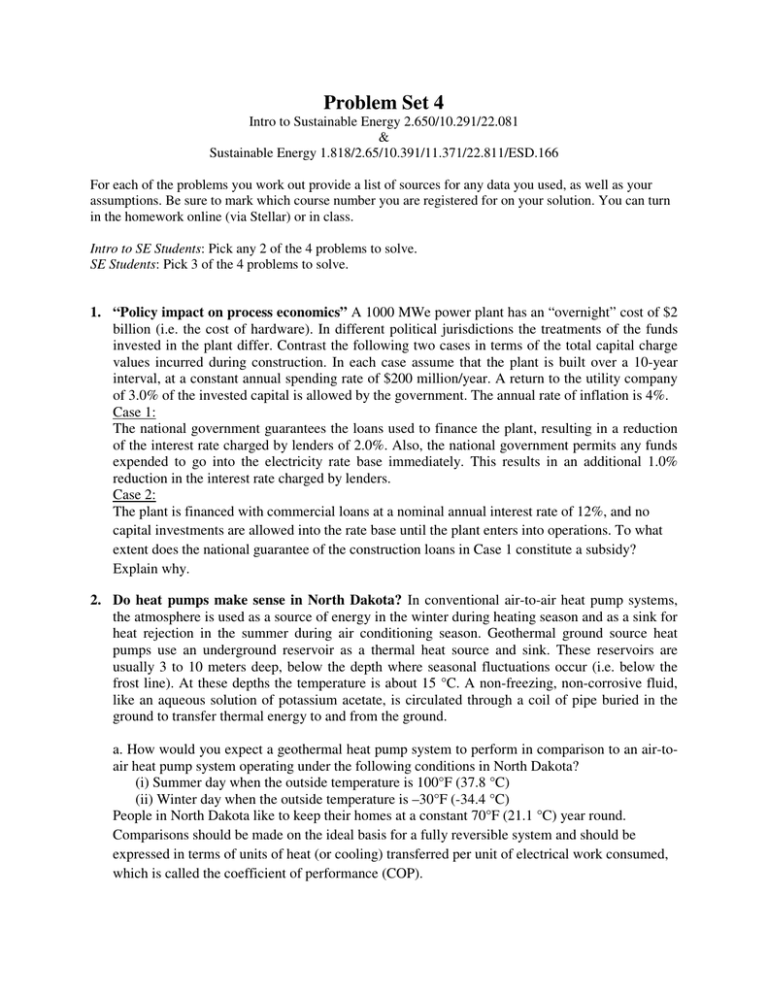
Problem Set 4 Intro to Sustainable Energy 2.650/10.291/22.081 & Sustainable Energy 1.818/2.65/10.391/11.371/22.811/ESD.166 For each of the problems you work out provide a list of sources for any data you used, as well as your assumptions. Be sure to mark which course number you are registered for on your solution. You can turn in the homework online (via Stellar) or in class. Intro to SE Students: Pick any 2 of the 4 problems to solve. SE Students: Pick 3 of the 4 problems to solve. 1. “Policy impact on process economics” A 1000 MWe power plant has an “overnight” cost of $2 billion (i.e. the cost of hardware). In different political jurisdictions the treatments of the funds invested in the plant differ. Contrast the following two cases in terms of the total capital charge values incurred during construction. In each case assume that the plant is built over a 10-year interval, at a constant annual spending rate of $200 million/year. A return to the utility company of 3.0% of the invested capital is allowed by the government. The annual rate of inflation is 4%. Case 1: The national government guarantees the loans used to finance the plant, resulting in a reduction of the interest rate charged by lenders of 2.0%. Also, the national government permits any funds expended to go into the electricity rate base immediately. This results in an additional 1.0% reduction in the interest rate charged by lenders. Case 2: The plant is financed with commercial loans at a nominal annual interest rate of 12%, and no capital investments are allowed into the rate base until the plant enters into operations. To what extent does the national guarantee of the construction loans in Case 1 constitute a subsidy? Explain why. 2. Do heat pumps make sense in North Dakota? In conventional air-to-air heat pump systems, the atmosphere is used as a source of energy in the winter during heating season and as a sink for heat rejection in the summer during air conditioning season. Geothermal ground source heat pumps use an underground reservoir as a thermal heat source and sink. These reservoirs are usually 3 to 10 meters deep, below the depth where seasonal fluctuations occur (i.e. below the frost line). At these depths the temperature is about 15 °C. A non-freezing, non-corrosive fluid, like an aqueous solution of potassium acetate, is circulated through a coil of pipe buried in the ground to transfer thermal energy to and from the ground. a. How would you expect a geothermal heat pump system to perform in comparison to an air-to­ air heat pump system operating under the following conditions in North Dakota? (i) Summer day when the outside temperature is 100°F (37.8 °C) (ii) Winter day when the outside temperature is –30°F (-34.4 °C) People in North Dakota like to keep their homes at a constant 70°F (21.1 °C) year round. Comparisons should be made on the ideal basis for a fully reversible system and should be expressed in terms of units of heat (or cooling) transferred per unit of electrical work consumed, which is called the coefficient of performance (COP). b. What factors will limit the performance of practical heat pumps below their ideal limit? 3. The importance of ΔT. You have been tasked by seismic energy to assess the lifetime thermodynamic efficiency of an engineered geothermal system they installed one year ago in southern California. A geological engineering firm has reported that the time evolution of the temperature of the geothermal formation which you are extracting energy from will follow the general relationship: T(t)=Ae-Bt + C where T(t = 0 years)= 800K, T(t = 1 years)=790K, and T(t->∞)->300K. a. Solve for each of the constants A, B, and C and plot temperature versus time for 50 years. b. Derive an expression for the maximum theoretical efficiency of a heat engine utilizing this heat source versus time. Plot the maximum theoretical efficiency versus time for 10 years. Assume that there is sufficient ocean water available to maintain a cold temperature of 295K for heat rejection. c. Now suppose that the company has installed a steam Rankine heat cycle to convert this heat source into usable work. Plot the efficiency on the same graph as (b). The pressure ratio is 2 and the high pressure is 1 bar (i.e. the cycle runs under vaccum), the isentropic pump efficiency is 90%, and the isentropic turbine efficiency is 75% (Hints: For a basis assume a mass flow rate of 1kg/s of working fluid. Use the rankine cycle calculator provided in class to calculate the efficiency at every year, then plot the series.) 4. Variable interest rates versus fixed interest rate. Your rich uncle recently passed away and you have been left $1million from his estate. You have done some research into different investment options and have narrowed your choices down to two. The first option is a 10 year investment with a fixed annual interest rate of 5% which compounds annually, the second is a 10 year investment which also compounds annually, but the interest rate is variable and is given by the formula: ivar iable (T ) = ivar iable (T −1) + R ×1% where T is year and R is a random number given by the probability distribution 1 1 1 P(R = −1) = , P(R = 0) = , P(R = 1) = . 3 3 3 Take i variable(T=0)=5%. For this problem neglect inflation. a. On average, should the variable interest investment yield more, less, or the same as the fixed interest investment? Why? b. If which investment would you choose, and why? c. Use Monte Carlo simulation to calculate what the expected value of the investment will be after 10 years with the variable interest rate? What is the standard deviation? The maximum achieved value? The minimum achieved value? d. What is the likelihood of losing money on the variable interest investment? What is the likelihood that you will triple your investment in 10 years? MIT OpenCourseWare http://ocw.mit.edu 22.081J / 2.650J / 10.291J / 1.818J / 2.65J / 10.391J / 11.371J / 22.811J / ESD.166J Introduction to Sustainable Energy Fall 2010 For information about citing these materials or our Terms of Use, visit: http://ocw.mit.edu/terms.
